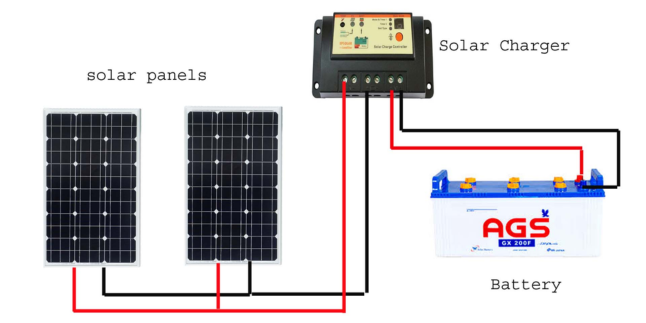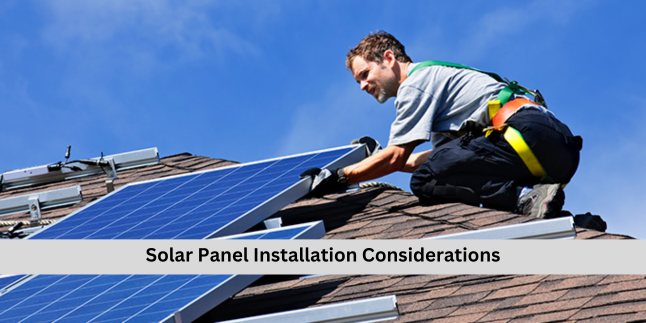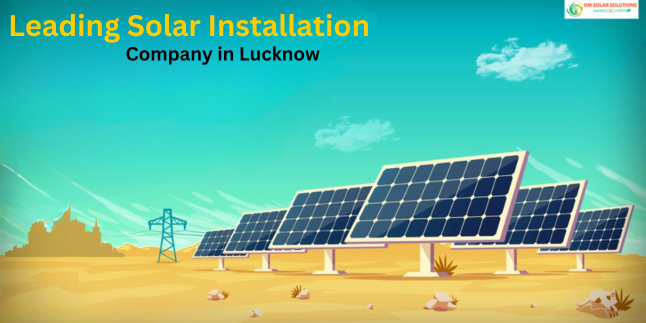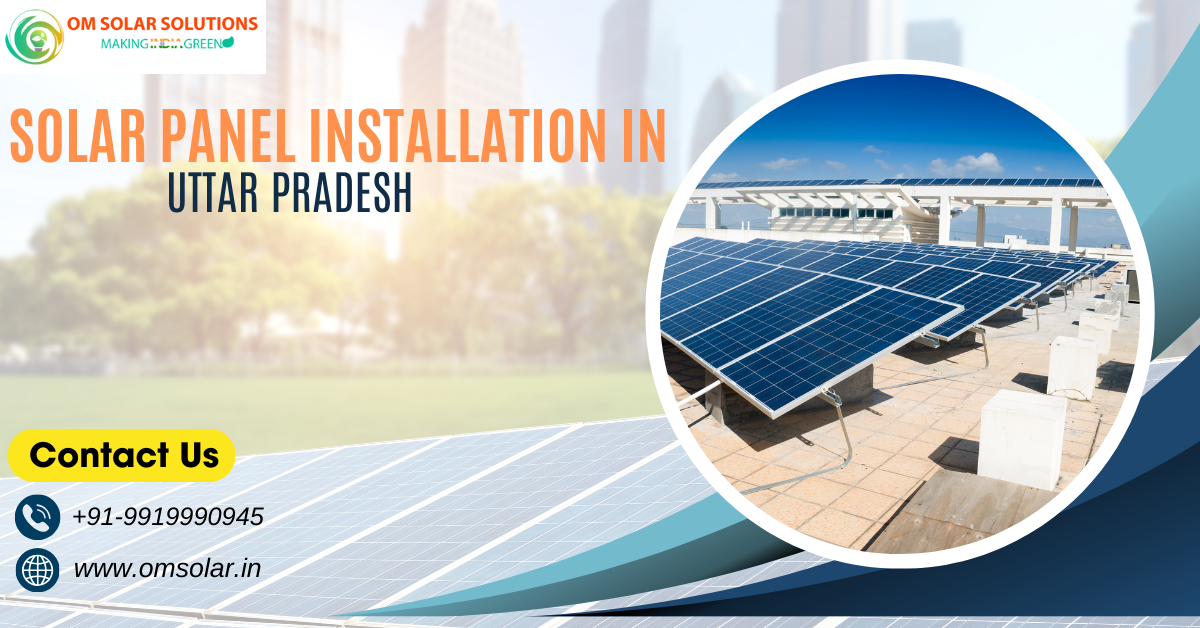India has chosen solar energy as a competitor in the global move toward clean and renewable energy. Uttar Pradesh has one of the most people in the country, and more solar energy is making its energy transition go faster.
Solar power is now a cheap and environmentally friendly way to get electricity through Solar Panel Installation Company in Uttar Pradesh. Solar panels get a lot of sunlight and turn it into electricity without hurting the environment. Now, solar power makes more money than any other kind of power. This means that more people are getting their money back quickly from buying solar panels. Putting up solar panels in Uttar Pradesh is what this blog post is about.
Also Read: The Ultimate Guide to 10kW Solar System Price in India with Subsidy
Process: Solar Panel Installation in India
Solar panels are a great way for businesses and homes to get power. The photovoltaic panel is put on the roof so that it gets the most sunlight and can produce the most electricity. Solar panel installation at home involves these steps:
1: Gather all solar power components first
The Solar Panel Process Step By Step starts by collecting all the necessary components for the solar power unit. This step is absolutely essential for the successful installation process. There are a few important parts you will need to set up a solar power system correctly. A charge controller, an inverter, a battery pack, and solar panels are some of these. Additionally, you will require a breaker, meter, MC4 connector, and fuses.
2: Power load calculation
Ensuring accurate measurement of power consumption before installation is absolutely essential. It’s quite straightforward. Would you please make a list of the appliances you use every day? Your TV, lights, fan, and any other appliances you use often could be included. Could you kindly share the daily schedule for operating your appliances? Refer to the specification chart to find the run time, power rating, and usage duration of your household electric appliances. Calculate the ‘Watt-Hour’ of an appliance by multiplying its power rating with its runtime. Utilize an online off-grid load calculator to perform the necessary calculations.
Step 3: Pick a battery and connect it to power
Solar power cannot generate electricity at night. The solution is simple: use a battery. Daytime solar power is stored in a lead-acid or lithium-ion battery. Nighttime battery discharge. This ensures a steady energy supply, improving battery storage. The user needs a power controller to monitor battery charging. These are between the battery and panels. Many controllers have a small LED light that monitors charging and controls battery power.
Step 4: Put the inverter in place
There are times when you need to use electrical devices but don’t have any adapters. This is when an inverter comes in handy. Direct current (DC) is what solar panels make. The inverter changes it into alternating current (AC), which is what appliances need. An inverter can be a pure sine wave, a square wave, or a sine wave that has been changed. They have a lot of different types and power wattages.
Step 5: Solar panels on the roof of a house

Once you have successfully set up the battery, controller, and inverters, it’s time to proceed with the installation of the solar panels. Select a rooftop or open area that receives ample sunlight for discussions. It is important to ensure that the mounting stand tilt closely matches the latitude of the solar system. Proper positioning of solar panels is imperative to achieve maximum efficiency and facilitate maintenance. Hence, it is crucial to subject the boards to direct sunlight for the entire duration of the day.
The installation of solar panels is the last topic we will cover. Solar panels typically feature a compact junction box located on the back. The junction box clearly indicates polarity with its negative and positive signs. But the junction box has to work with the wires that come from outside. The best way to do this is to use a black wire for negative and a red wire for positive.
Step 6: Electrically connect the solar panels and battery

After you’ve done everything that needs to be done, connect the solar panels to the battery. In some PV systems, these parts are usually paired together. Adding the positive terminal of one device to the negative terminal of another is another way to make a series connection. To make a parallel connection, you need to link the negative end of one device to the negative end of another device.
Step 7: Arrange the battery and inverter stands
The battery and inverter stand easily on the home solar unit’s stands. Wiring the inverter and battery begins after setting up their locations. Connect the controller first. The controller connects to the solar panels via the first connection on the left. The battery and controller can be connected via the second port. The final connective element links the controller and direct DC load.
Water in DC isolators can damage them and put roofers at risk of electrical hazards. Install and maintain solar panels properly to maximize their use. Connecting the solar panel to the charge controller requires an MC4 connector. When you connect the controller to the battery, its LEDs should light up. Connecting the inverter’s terminal to the battery’s terminal is crucial.
Key Solar Panel Installation Considerations

Setting up solar panels in UP should start with thinking about how much it will cost. You will learn about the things that lead to savings in the next section.
- Initial Costs: Solar resources and their installation come with a lot of up-front costs, such as solar panels, inverters, mounting equipment, and installation.
- Tax Credits and Other Incentives: Government incentives, grants, and tax breaks can significantly reduce the initial cost of building solar installations. These programs may vary by state, but they can help make the installation process more affordable.
- Electricity Rates: The electricity rates in the state of Uttar Pradesh are an important factor to consider when determining the financial benefits of installing solar panels. Given the current high electricity rates, there is a chance to maximize your financial returns.
- Savings on energy: Choosing solar panels that can make more energy is very important. The answer to this question depends on things like the size of the system and the way the sun shines where it is located.
- Net Metering: Net metering means that people who have solar panels in their homes can help both themselves and the power grid. They can lower their electricity costs and send extra electricity back to the grid at the same time.
How to Figure Out the Payback Period
For a solar panel system, the payback period refers to the amount of time it takes to recoup the initial investment through reductions in the amount of power consumed and financial incentives and savings. For most people in Uttar Pradesh, it takes anywhere from five to seven years to see a return on their investment when they install solar panels.
Leading Solar Installation Company in Lucknow: Om Solar Solution

Om Solar Solution is without a doubt the best choice if you’re looking for the best solar installation company in Lucknow. Om Solar Solution has become a leader in the solar industry by taking the lead in providing excellent service and cutting-edge technology. Our company, Lucknow Solar Company, provides reliable and effective solar solutions to meet the rising need for clean energy in the region. Because we want to help people and businesses in Lucknow switch to clean and long-lasting energy sources, we are committed to installing the best solar panels on homes and businesses. This not only saves money in the long run, but it also helps the environment.
Also Read: Harnessing Sunshine: The Leading Solar Companies in Haryana
A Brief Look
At the end of the day, Uttar Pradesh’s switch to solar energy is good for the environment and will make them money. Solar power is becoming more popular among people and businesses because it is cheap and good for the environment. Companies like Om Solar Solution; and Kanpur Solar Company offer these options. The step-by-step process of installing solar panels, from getting the parts you need to connect the system, makes the switch to clean energy easy. The payback time for most installations is between five and seven years. This looks at many things, including the initial costs, incentives from the government, electricity rates, and net metering. By switching to solar energy, Uttar Pradesh is taking a big step toward a greener future. This not only saves a lot of money but also makes sure that the home is energy-sufficient.
Contact Us
Brand Name: Om Solar
Number: Call/WhatsApp: +91-9919990945
Email: sales@omsolar.in
Website: www.omsolar.in

